Barnard’s Inn was one of the Inns of Chancery where solicitors traditionally trained and practised law from chambers within the Inn building until the nineteenth century. As the requirement for solicitors to be a member of, and have offices within, an Inn of Chancery lapsed, the buildings emptied out, the solicitors scuttled away and, often run down, the old Inns became places of cheap accommodation for the less than well off. Pip in Charles Dickens’s book Great Expectations is brought to live in rooms in Barnard’s Inn in the 1820’s and is far from impressed by what he finds there.
“I….found Barnard[‘s Inn] to be …the dingiest collection of shabby buildings ever squeezed together in a rank corner as a club for Tom-cats. We entered this haven through a wicket-gate, and were disgorged by an introductory passage into a melancholy little square that looked to me like a flat burying-ground. I thought it had the most dismal trees in it, and the most dismal sparrows, and the most dismal cats, and the most dismal houses (in number half a dozen or so), that I had ever seen. I thought the windows of the sets of chambers into which those houses were divided were in every stage of dilapidated blind and curtain, crippled flower-pot, cracked glass, dusty decay, and miserable makeshift; while To Let, To Let, To Let, glared at me from empty rooms, as if no new wretches ever came there, and the vengeance of the soul of Barnard were being slowly appeased by the gradual suicide of the present occupants and their unholy interment under the gravel. A frowzy mourning of soot and smoke attired this forlorn creation of Barnard, and it had strewn ashes on its head, and was undergoing penance and humiliation as a mere dust-hole. Thus far my sense of sight; while dry rot and wet rot and all the silent rots that rot in neglected roof and cellar,—rot of rat and mouse and bug and coaching-stables near at hand besides—addressed themselves faintly to my sense of smell.”
Most of Barnard’s Inn – like most of the Inns of Chancery have been knocked down, but it does have some eighteenth century houses remaining that Pip would have known as well as a central hall that dates back to the fifteenth century. In the old days the main entrance was on Fetters Lane but all that remains of that is a non-descript walkway that leads through a jumble of over-powering post-modern mock-Toytown redbrick buildings to a small square where the hall and the Georgian houses sit. The Inn is part of Gresham College now and the main entrance is on High Holborn opposite the Prudential Building where Furnival’s Inn had once stood – and where Dickens himself had roomed not too long after Pip lived in Barnard’s Inn.
If you walk in off High Holborn, you walk along a tiled passageway into the square. The entrance to the worthy lecture rooms is off the cramped square which contains rather pleasant looking trees. Touch the wall of the old hall and you are feeling a part of old medieval London that even Dickens was watching being pulled down building by building in his time as the railways cut their way through the city, pouring millions on new Londoners out onto the streets of the metropolis. It may be made insignificant by the size of its neighbouring buildings but it remains resilient, still here and clinging on for dear life.
There is a memorial to the Mercers School in the square. The school was founded in 1542 and was run from a number of locations in the city until coming here to Barnard’s Inn for its final days, closing in 1959. Since 1991 the old buildings of the Inn have been used for lectures by Gresham College.
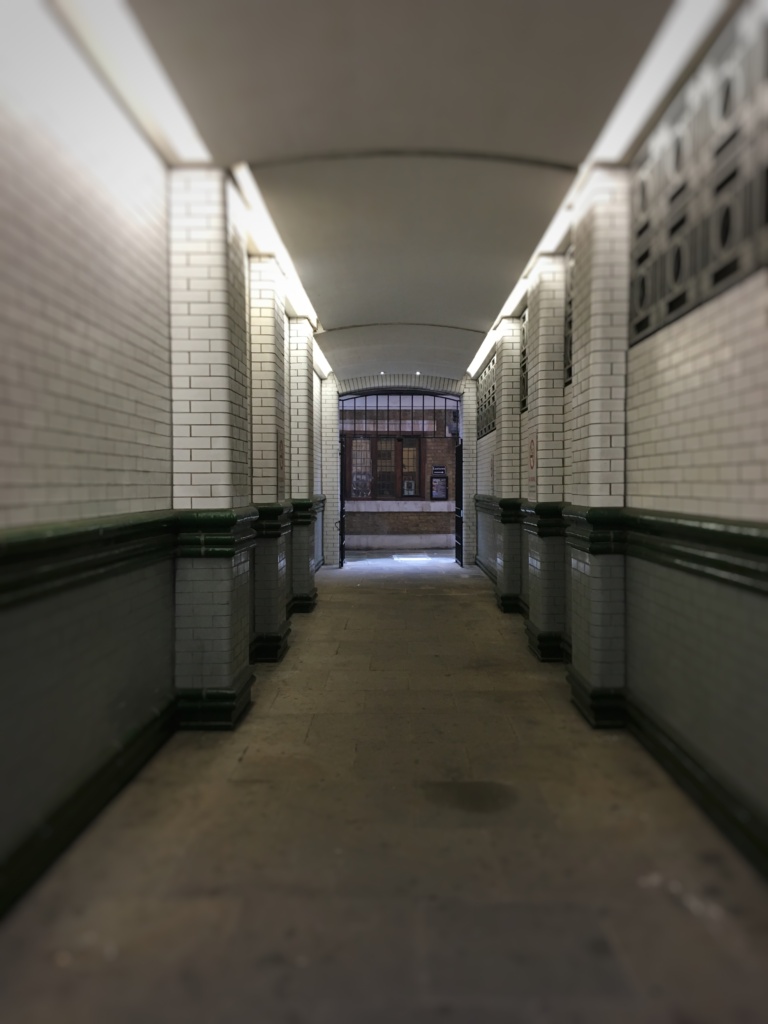
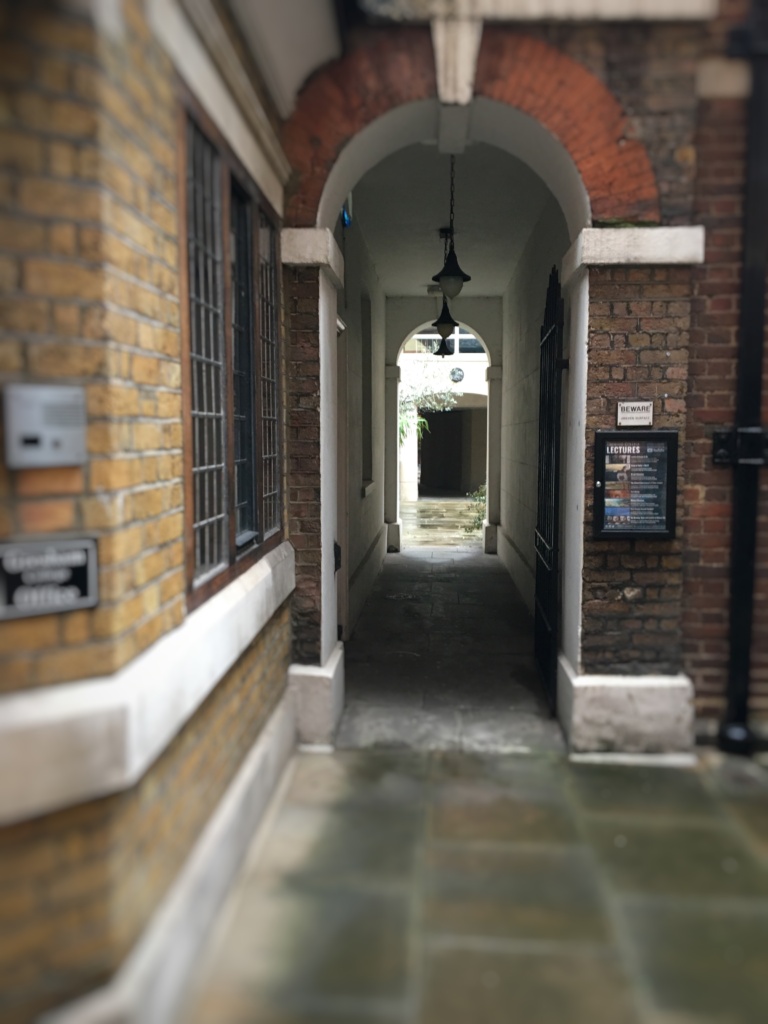
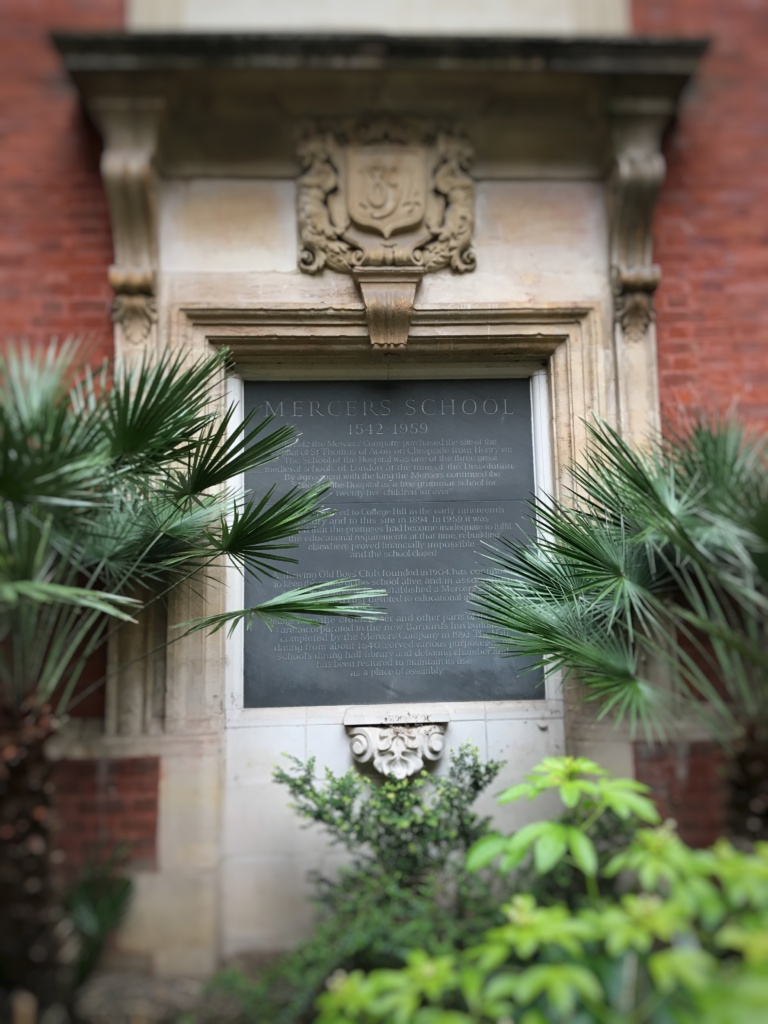
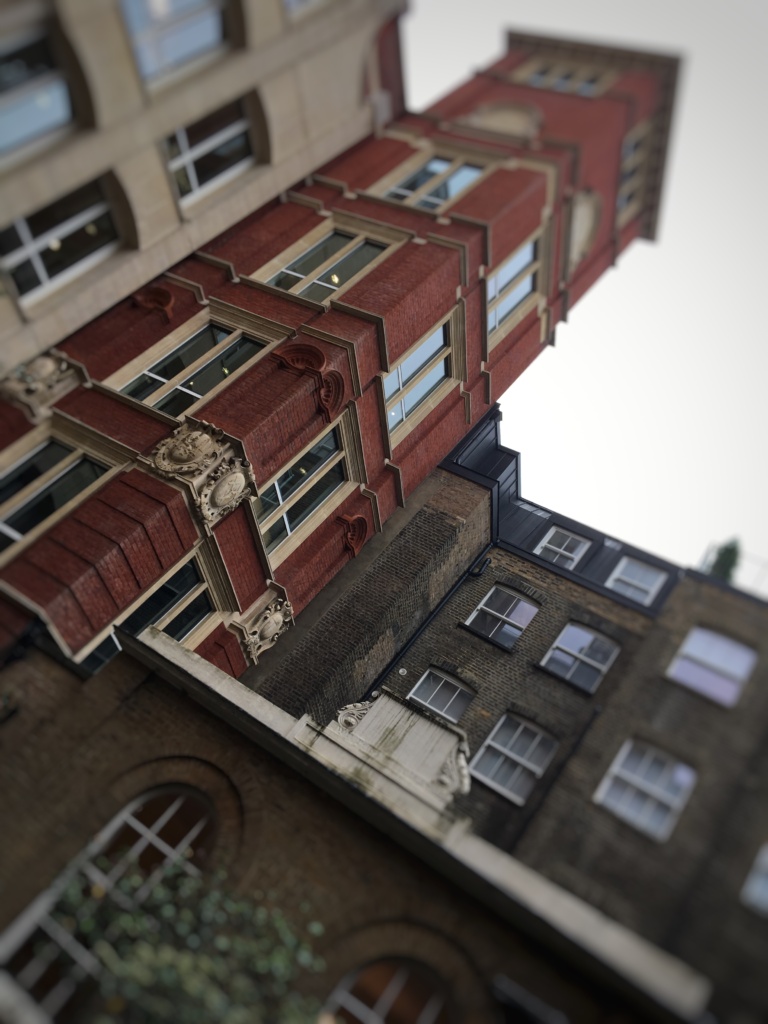
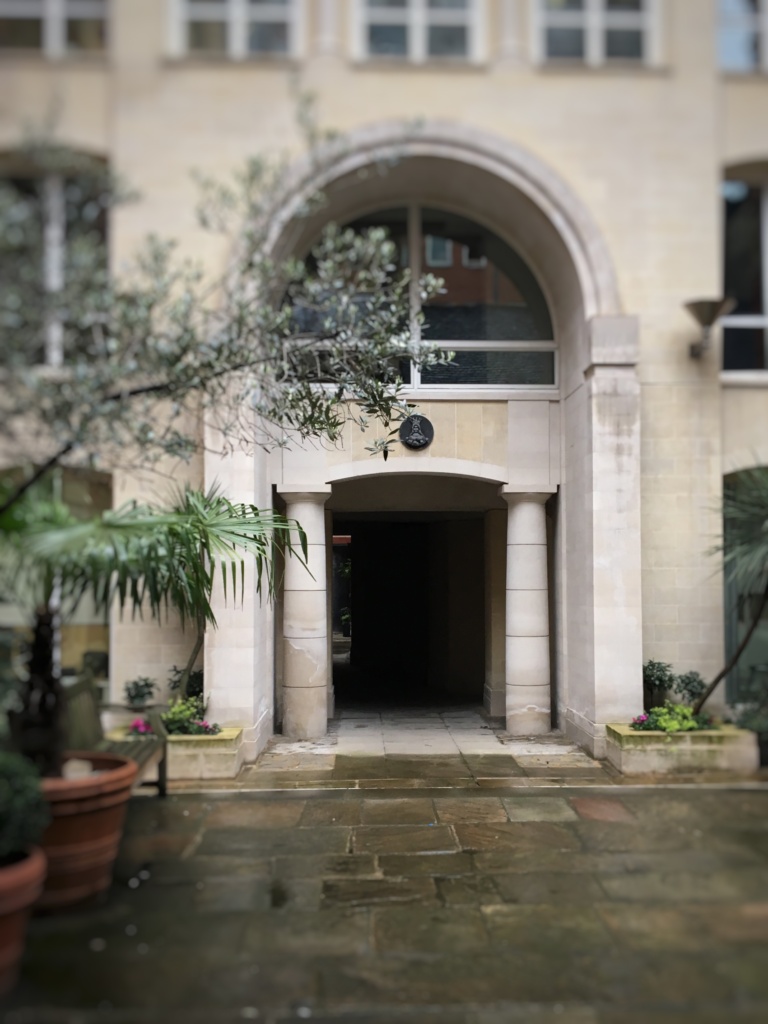
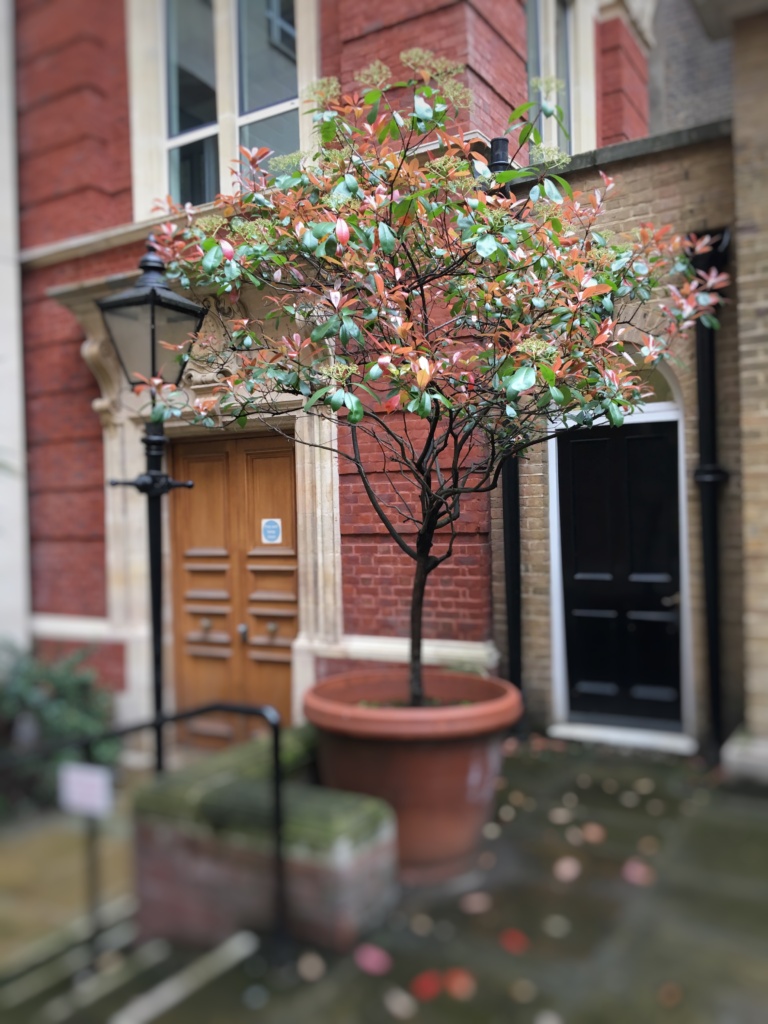
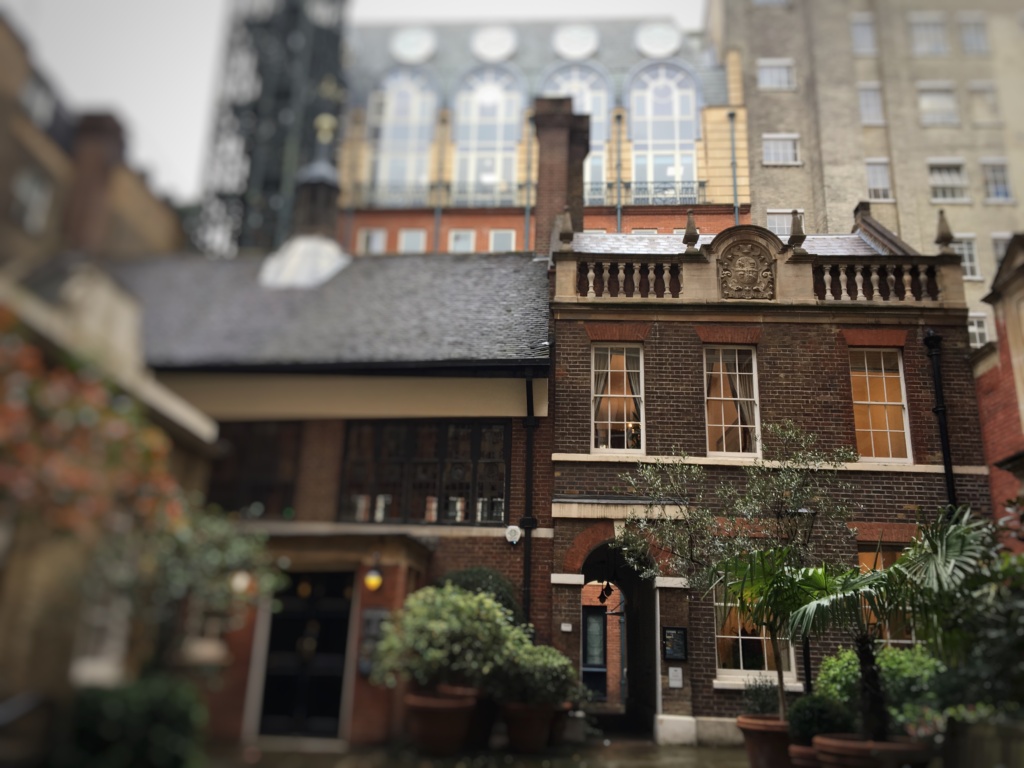
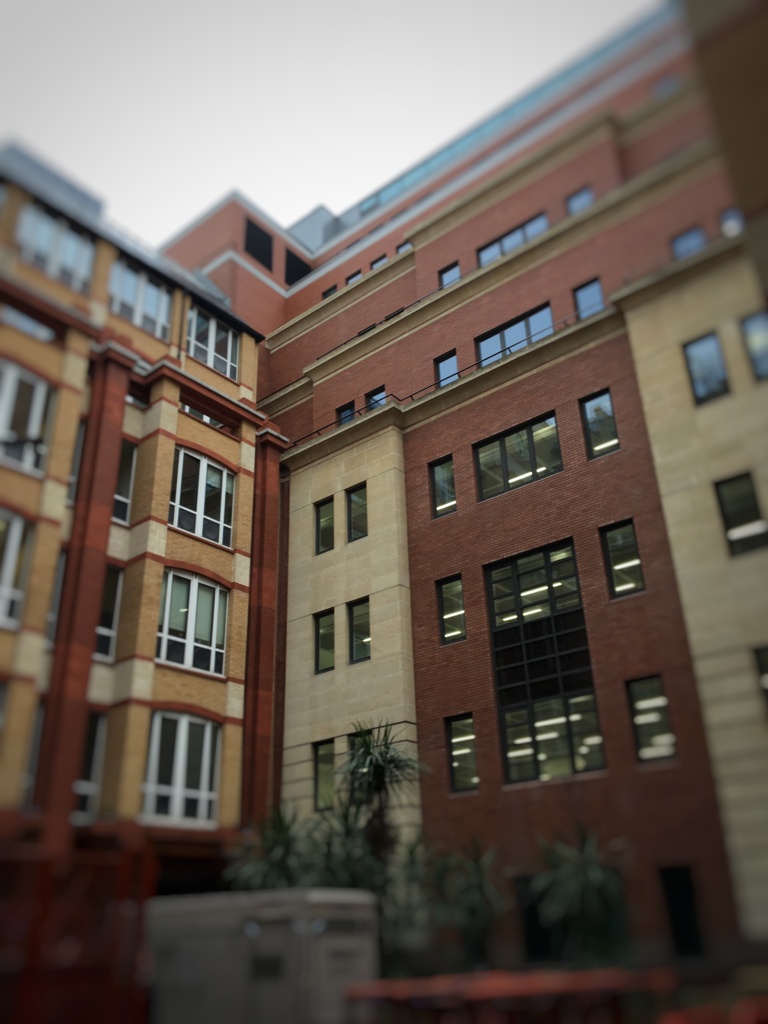
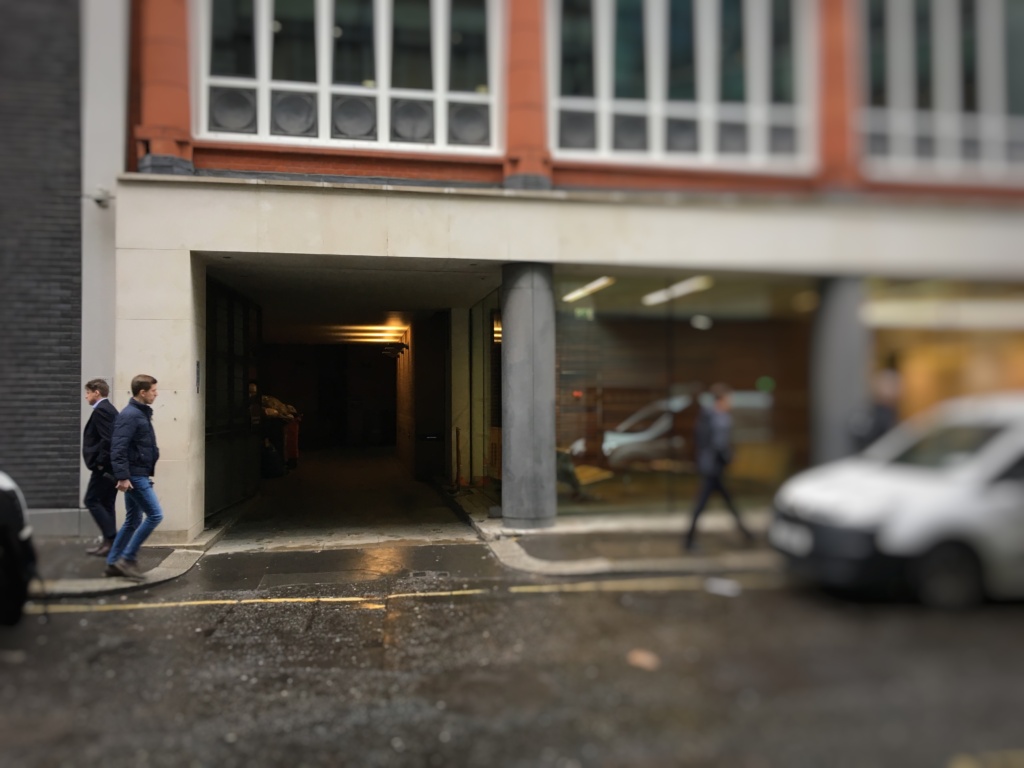
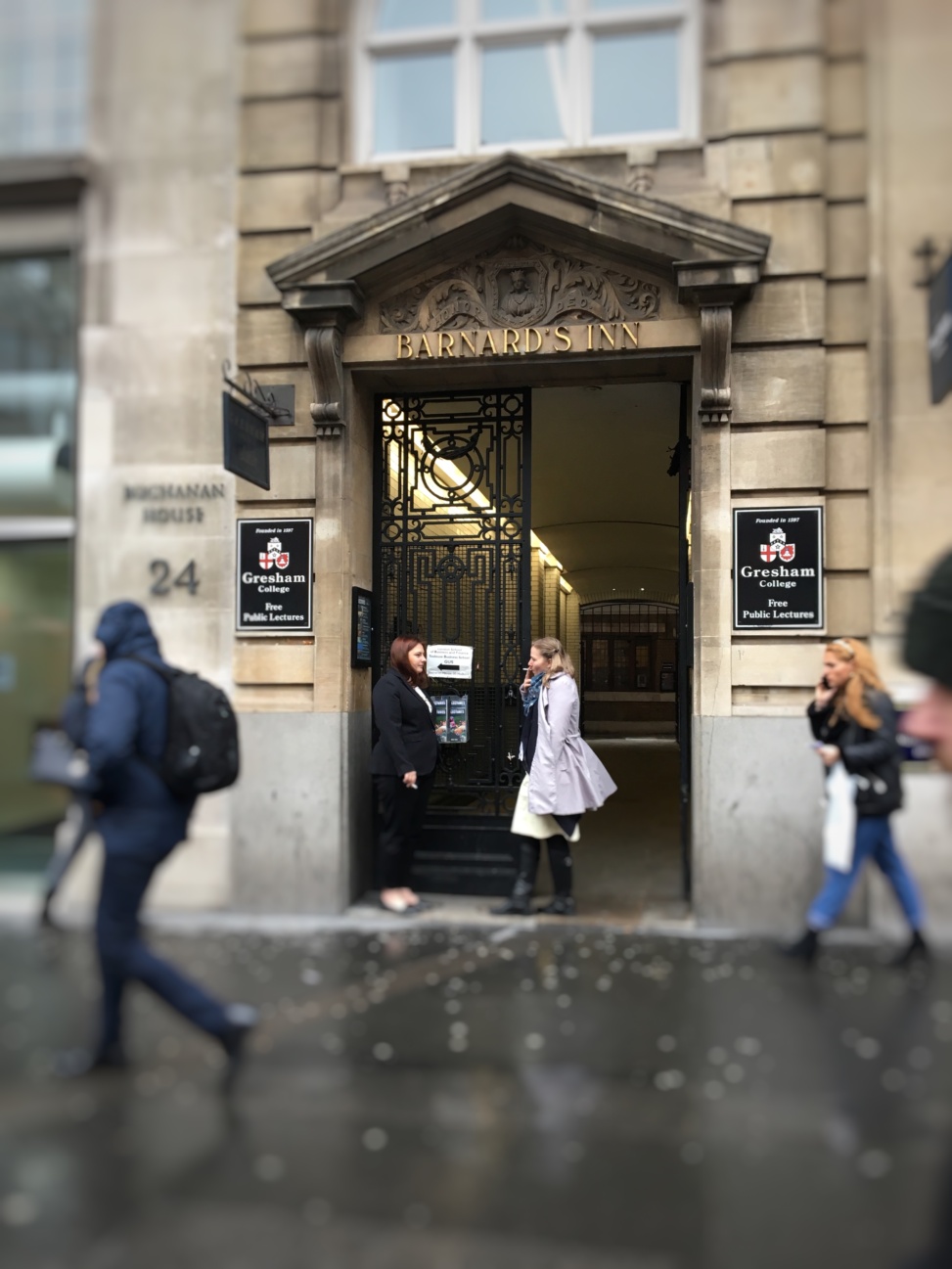
1 Comment
1 Pingback